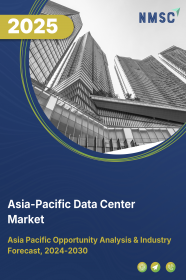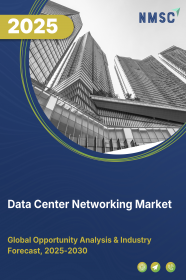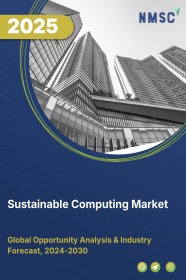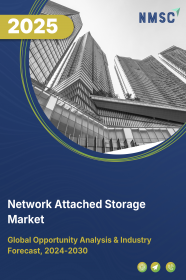
APAC Data Center Market by Component (Hardware, Software, Service), by Type (Colocation, Hyperscale, Edge, Other Types), by Deployment Model (On-Premises, Cloud, Hybrid), by Tier Standard (Tier 1, Tier 2, Tier 3, Tier 4), by Cooling Techniques (Air Cooling, Liquid Cooling, Dry Cooling, Immersion Cooling, Others), by Enterprise Size (Large Enterprises, Small and Medium Size Enterprise), by End User (BFSI, IT and Telecom and Other End Users)– Opportunity Analysis and Industry Forecast, 2024–2030
Industry: ICT & Media | Publish Date: 26-May-2025 | No of Pages: 300 | No. of Tables: 231 | No. of Figures: 156 | Format: PDF | Report Code : IC2435
US Tariff Impact on Asia-Pacific Data Center Market
Trump Tariffs Are Reshaping Global Business
Asia-Pacific Data Center Market Overview
The Asia-Pacific Data Center Market size was valued at USD 31.89 billion in 2023, and is predicted to reach USD 77.29 billion by 2030, at a CAGR of 13.5% from 2024 to 2030.
The data center also known as network infrastructure market encompasses the planning, construction, operation, and upkeep of infrastructure dedicated to housing computing systems. It encompasses various components such as servers, storage systems, and networking gear, and provides services such as cloud computing and connectivity solutions. Currently, the industry is experiencing widespread adoption of cloud services, alongside the rise of edge computing to minimize latency.
Key trends include an emphasis on sustainability, increased cybersecurity concerns, the integration of hybrid and multi-cloud approaches, and the influence of 5G networks. These trends underscore the industry's response to the growing demand for scalable, efficient, and secure data processing and storage solutions in the era of digital transformation. According to the United States International Trade Commission, the data processing and storage market is projected to expand from USD 56 billion in 2020 to USD 90 billion by 2025.
Rapid Digital Transformation Accelerates Market Growth
The Asia-Pacific region is undergoing a swift digital transformation across multiple industries, significantly boosting the demand for data center services. Governments and enterprises alike are leveraging digital technologies to enhance operational efficiency, customer engagement, and global competitiveness. This shift necessitates advanced, scalable, and secure data infrastructure.
Key regional economies—including China, Japan, India, and South Korea—are spearheading national digitalization strategies, resulting in considerable investments in network and IT infrastructure. Furthermore, the widespread adoption of cloud computing, Internet of Things (IoT), artificial intelligence (AI), and big data analytics is driving an exponential surge in data generation and processing needs, thereby fueling the expansion of the data center market across the region.
Strategic Investments and Collaborations Propel Market Expansion
The Asia-Pacific data center market is also being driven by strategic investments, government support, and robust public-private collaborations. Countries such as India, Indonesia, Singapore, and Malaysia are offering policy incentives and regulatory support to promote infrastructure development, improve connectivity, and attract foreign direct investments.
Global technology giants—including Amazon Web Services (AWS), Microsoft, Google, and NTT—are actively investing in hyperscale facilities across the region to meet growing demand for cloud and data storage services. These investments are increasingly aligned with sustainability goals, focusing on green data centers, renewable energy adoption, and energy-efficient cooling technologies, which further enhance the region's market attractiveness.
High Capital Expenditure and Regulatory Compliance Challenge Market Growth
The growth of the data center market in the Asia-Pacific region faces significant restraints due to high capital expenditure requirements and complex regulatory landscapes. Establishing and operating data centers involves substantial investments in land, power infrastructure, cooling systems, security, and connectivity. These high upfront costs act as a barrier to entry for small and medium-sized enterprises (SMEs) and new market entrants.
Additionally, compliance with evolving environmental and data sovereignty regulations across countries in the region further complicates market expansion. Governments are increasingly implementing strict sustainability and energy-efficiency standards, compelling data center operators to invest in green technologies and renewable energy, which can escalate operational costs and delay project timelines. These challenges may hinder rapid deployment and scalability, particularly in emerging markets.
Edge Computing and 5G Deployment Unlock New Growth Avenues
The rapid adoption of edge computing and 5G networks presents significant opportunities for the Asia-Pacific data center market. Edge computing enables real-time data processing closer to end-users, reducing latency and alleviating the load on centralized data centers. This is especially beneficial for applications such as autonomous vehicles, smart cities, IoT, AR/VR, and industrial automation.
As countries across the region roll out 5G infrastructure, the demand for distributed micro data centers is expected to rise, offering a scalable and efficient alternative to traditional models. Moreover, edge computing enhances data privacy and security by enabling local data handling—critical for sectors like finance, healthcare, and government.
Growing investments from both public and private stakeholders, including startups and hyperscalers, highlight a strong push toward edge capabilities. This evolution provides lucrative growth potential for service providers, infrastructure developers, and technology vendors across Asia-Pacific.
China Holds the Dominant Market Share in Asia-Pacific Data Center Market
China holds the dominant position in the global network infrastructure landscape, boasting a staggering 440 operational facilities spread throughout the nation, according to CloudScene's data. This expansion parallels the remarkable growth of China's digital economy, that surged to 41.5% of the GDP, amounting to around 7.25 trillion US dollars in 2022.
This surge underscores China's commitment to modernization, a commitment vividly demonstrated at the 6th Digital China Summit. As the digital realm continues to flourish, it is poised to exert a profound influence on China's data center industry, showcasing the nation's steadfast dedication to digital advancement.
Furthermore, China's data center sector is witnessing a wave of innovation, fueling market demand. Notably, China achieved a significant milestone with the establishment of the world's inaugural submerged commercial network infrastructure off the coast of Hainan Island. Spearheaded by collaboration between Highlander, a private network infrastructure entity, and China Offshore Oil Engineering Co. (COOEC), this project harnesses underwater cooling technology for enhanced energy efficiency.
However, amidst these advancements, environmental considerations loom large. Furthermore, Guizhou province is swiftly emerging as a powerhouse in the Asia-Pacific data center market growth within China, setting ambitious targets of 800,000 racks and 4 million servers by 2025. With 18 operational network infrastructures, including industry giants such as Huawei and Tencent, Guizhou is primed to ascend as a premier global data hub.
Singapore to Witness Substantial Growth in the Asia-Pacific Data Center Market
Singapore's strategic positioning renders it a pivotal nexus for data center market, bridging the realms of the East and West seamlessly. Within the APAC network infrastructure landscape, Singapore holds the 6th position, boasting a network of 99 network infrastructure spread nationwide. Notably, industry leaders such as Digital Realty embarked on ground-breaking initiatives within Singapore, exemplified by their innovative cooling tower project.
This initiative not only establishes a new benchmark for water conservation and operational efficiency in the local network infrastructure sphere but also resonates with global sustainability imperatives. Its pioneering nature similar endeavors industry-wide, underscoring the escalating significance of environmental concerns in the Asia-Pacific data center market trends.
Furthermore, Singapore's Infocomm Media Development Authority (IMDA) introduced a sustainability framework tailored for data centers situated in tropical climates, advocating for operational temperatures exceeding 26 degrees Celsius to enhance energy efficiency. Preliminary trials conducted in collaboration with operators such as Digital Realty yielded promising results, showcasing a notable 2-3% reduction in energy consumption.
Concurrently, GovTech is spearheading experimentation with elevated temperatures within a governmental network infrastructure, while concerted efforts with the Building and Construction Authority (BCA) aim to revamp the Green Mark certification scheme, fostering broader adoption of sustainable operational practices within the industry.
Competitive Landscape
The key players operating in the Asia-Pacific data center industry include Amazon Web Services (AWS), IBM Corporation, Microsoft Corporation, Oracle Corporation, NTT Communications Corporation], Equinix Inc., Digital Realty, AirTrunk, NEXTDC, ST Telemedia Global Data Centres (STT GDC), GDS Holdings, Keppel Data Centres, Chindata Group, Bridge Data Centres, SAP SE, Alibaba Group Holding Limited, Princeton Digital Group (PDG), Alphabet Inc., Singtel, Rackspace Technology Inc. and others.
Asia-Pacific Data Center Market Key Segments
By Component
-
Hardware
-
UPS
-
Generators
-
Transfer Switches
-
Cooling Systems
-
Computer Room Air Conditioning (CRAC)
-
Racks
-
Others
-
-
Software
-
Services
By Type
-
Colocation
-
Hyperscale
-
Edge
-
Others
By Deployment Model
-
On-Premises
-
Cloud
-
Hybrid
By Tier Standard
-
Tier 1
-
Tier 2
-
Tier 3
-
Tier 4
By Cooling Techniques
-
Air Cooling
-
Liquid Cooling
-
Dry Cooling
-
Immersion Cooling
-
Others
By Enterprise Size
-
Large Enterprises
-
Small and Medium Enterprises
By End User
-
BFSI
-
IT and Telecom
-
Government
-
Energy and Utilities
-
Other End Users
By Country
-
Asia-Pacific
-
China
-
Japan
-
India
-
South Korea
-
Australia
-
Indonesia
-
Singapore
-
Taiwan
-
Thailand
-
Rest of Asia Pacific
-
Key Players
-
Amazon Web Services (AWS)
-
IBM Corporation
-
Microsoft Corporation
-
Oracle Corporation
-
NTT Communications Corporation
-
Equinix Inc.
-
Digital Realty
-
AirTrunk
-
NEXTDC
-
ST Telemedia Global Data Centres (STT GDC)
-
GDS Holdings
-
Keppel Data Centres
-
Chindata Group
-
Bridge Data Centres
-
SAP SE
-
Alibaba Group Holding Limited
-
Princeton Digital Group (PDG)
-
Alphabet Inc.
-
Singtel
-
Rackspace Technology Inc.
REPORT SCOPE AND SEGMENTATION:
|
Parameters |
Details |
|
Market Size in 2023 |
USD 31.89 Billion |
|
Revenue Forecast in 2030 |
USD 77.29 Billion |
|
Growth Rate |
CAGR of 13.5% from 2024 to 2030 |
|
Analysis Period |
2023–2030 |
|
Base Year Considered |
2023 |
|
Forecast Period |
2024–2030 |
|
Market Size Estimation |
Billion (USD) |
|
Growth Factors |
|
|
Countries Covered |
10 |
|
Companies Profiled |
20 |
|
Market Share |
Available for 10 companies |
|
Customization Scope |
Free customization (equivalent up to 80 working hours of analysts) after purchase. Addition or alteration to country, regional, and segment scope. |
|
Pricing and Purchase Options |
Avail customized purchase options to meet your exact research needs. |

















 Speak to Our Analyst
Speak to Our Analyst





















